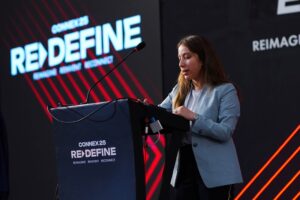What Is a Blended Workforce?
A blended workforce is a staffing model where organizations employ a mix of full-time, part-time, remote, freelance, contract, temporary, and seasonal workers. This flexible workforce approach allows businesses to scale operations based on need, tap into specialized skills, and maintain agility in a fast-changing economy.
As hybrid work becomes the norm, over 70% of HR teams have started developing formal blended workforce strategies to meet evolving workforce demands post-pandemic.
How Do Employers Structure a Blended Workforce?
There’s no one-size-fits-all structure, your ideal mix will depend on your industry, business goals, and operational requirements. For example:
- Permanent staff might handle core functions like operations or customer support.
- Contractors or freelancers could be brought in for specialized tasks like IT support, content creation, or compliance audits.
- Seasonal or temporary workers can support peak workloads in industries like retail, agriculture, or hospitality.
- Remote and hybrid employees help companies attract talent across geographies while cutting overhead costs.
The goal is to balance continuity and flexibility by assigning roles based on long-term needs versus short-term expertise or project cycles.
Benefits of a Blended Workforce
A blended workforce offers strategic advantages to both employers and workers:
For Employers:
- Scalable staffing: Adjust headcount based on demand without long-term commitments.
- Cost efficiency: Reduce overhead by offering benefits only to eligible employees.
- Access to talent: Tap into specialized skills without full-time hires.
- Business agility: Respond faster to market changes or project needs.
For Employees:
- Flexible schedules: Ideal for caregivers, students, and freelancers.
- More autonomy: Choice over when, how, and where they work.
- Varied experiences: Opportunities to work across industries or projects.
Challenges of Managing a Blended Workforce
While a blended team has clear benefits, it also presents some challenges:
- Disengagement risks: Part-time or remote workers may feel isolated or undervalued.
- Communication gaps: Without consistent, transparent channels, information may not reach all employees.
- Creativity and collaboration: Virtual collaboration tools can’t always replicate the spontaneity of in-person brainstorming.
Still, research shows remote and hybrid employees are just as engaged, if not more, when leaders offer regular feedback and maintain open communication.
When Should You Consider a Blended Workforce?
A blended model is ideal when your business:
- Experiences seasonal fluctuations (e.g., retail, agriculture, tourism).
- Requires specialized expertise on a temporary basis.
- Needs to fill roles quickly, such as during staff absences or urgent projects.
- Can’t offer full-time benefits to every worker due to budget constraints.
Examples:
- Hire a contract UX designer for a website redesign.
- Bring on seasonal workers during holidays.
- Employ part-time receptionists while recruiting a full-time hire.
Unique Needs of Blended Workforce Employees
To keep your entire workforce productive and engaged, be mindful of these areas:
- Training: Ensure contract and remote workers receive onboarding and access to tools they need.
- Communication: Use clear, consistent channels, like Slack, email, or dashboards, to keep everyone informed in real time.
- Recognition: Acknowledge all contributors, regardless of work arrangement, through inclusive reward systems and performance feedback.
How to Improve Engagement in a Blended Workforce
Employee engagement is crucial, regardless of employment type. Focus on four core pillars:
- Development: Offer learning opportunities for all workers.
- Purpose: Clearly communicate company mission and how each role contributes.
- Connection: Foster team bonding across departments and contract types.
- Recognition: Implement fair systems to reward effort and outcomes.
Tactical steps:
- Standardize onboarding across all worker types.
- Schedule regular check-ins between managers and hybrid/contract workers.
- Include contractors and remote staff in team events or shoutouts.
- Offer pro-rated or customized perks where possible.
A well-managed blended workforce enhances organizational flexibility, reduces costs, and expands access to talent. However, its success hinges on inclusive policies, proactive communication, and a commitment to engaging every team member, regardless of their job title or contract type.







